Growing up in a Greek family that produces Olive Oil I came to know Olive Oil in more ways than just oil in a bottle. Olive Oil is so much more than that!
So What Is Olive Oil?
Olive Oil is the healthiest and most nutritious cooking fat. It is made by pressing olives. A crop that derives from the olive tree, which originates in the Countries of the Meditteranean. And that's what they tell you about Olive oil and probably already know... But here's what they don't tell you... Its history and origin, how it's made and what's the production process, and how to distinguish real olive oil from fake one.
And since there is a lot to know and this post is a bit long you may jump to each section simply by clicking on a title below. Otherwise, grab a big mug of coffee before you start reading.?☕
Table Of Contents
1. THE HISTORY OF OLIVE OIL
The Myth Of The First Olive Tree
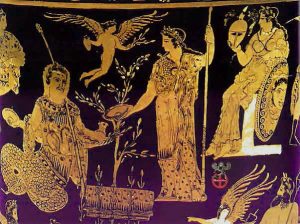
The history of the Olive tree begins in the Eastern part of the Mediterranean. Ancient Greeks started to spread the olive trees to the Western parts of the Meditteranean, during the years of the Ancient Greek empire. According to Greek Mythology, the Olive tree first appeared, after Goddess Athena (Zeus' favorite daughter) offered it to the Greeks after a fight she had with Poseidon (the God of the Sea). The Athenians then named the city Athens (Athena in Greek, Αθήνα) in order to thank the Goddess for her offering. And placed the tree on the Acropolis. Today there is still one Olive tree sitting right on that spot on Acropolis.
The Oldest Olive Trees
The Olive tree was considered holy by the Ancient Greeks. It was a symbol of life, wisdom, and peace. There were even laws that forbid people to cut these trees and in some of these laws, the punishment was even death.
Some examples of the oldest olive trees are that of "Peisistratos Tree", which is located by the banks of the Cephisus River in Athens and is believed to be planted in the 6th century BC, and the 'Finix Olive' on the island of Crete that is thought to be 2000 years old.
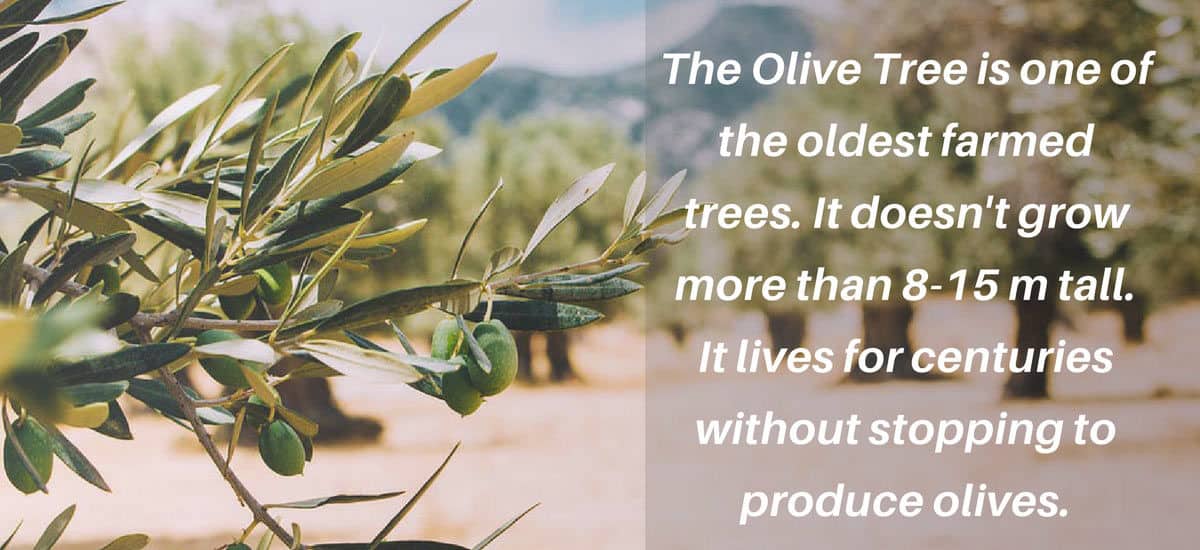
Uses Of Olive Oil In Ancient Greece
To Ancient Greeks, the uses as well as the health benefits, of Olive oil were already well known and numerous. They used olives and olive oil to feed. They produced olive oil by pressing the olives with weights. The olive oil out of the first press was the one that was used for food. The one out of the second round of press was used for therapeutical body creams and condiments, and the third for lighting.
The olive wreath that was called 'kotinos' (κοτίνος) was used to crown the winning athletes of the Olympic Games (they themselves were covered in olive oil). An olive tree branch was used held in the same way as a white flag. Since it symbolized peace, it was used mostly by messengers to deliver messages of reconciliation.
2. HOW IS OLIVE OIL MADE
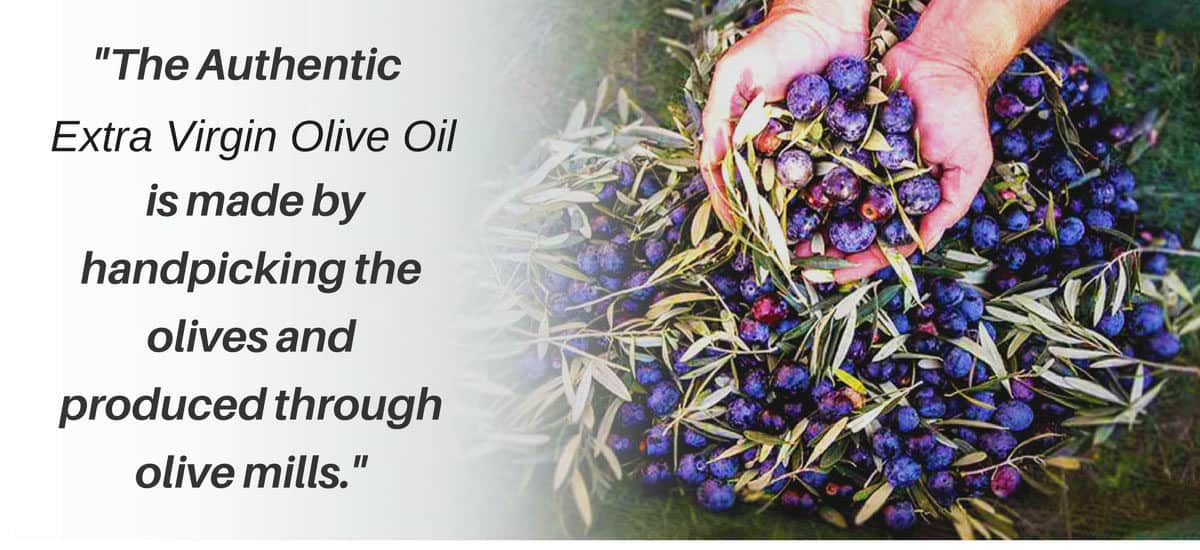
The Picking Of The Olives
The olive-picking process begins somewhere between October and November and may go on until December and January. That depends on the area and the weather conditions. Throughout the years, when the olive harvesting season arrived, the whole family would take part. They would leave for their fields early in the morning and arrive home before dawn.
The olive picking could take on for months. Depending on the number of trees a family owned and the weather conditions. This tradition still holds on today. In most Greek villages, each family owns its own olive trees and produces its own olive oil. In my family, this process takes usually up to a month (that is if the weather helps by not raining).
The traditional way of picking the olives is by laying very large plastic 'sheets' or 'nets' on the ground under the olive trees. Then the men start to hit the branches, with long wooden sticks, to make the olives fall down from the tree.

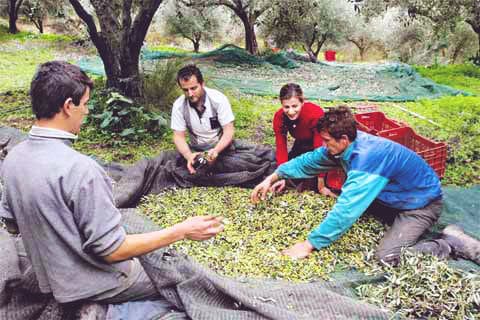
After all the olives have fallen on the plastic sheet or net, everyone gathers around and starts to separate the olives. They remove most of the small leaves and twigs and then place the olives in plastic baskets or buckets.
Once a sufficient amount of olives is gathered, they take the olives to the olive oil mill (ελαιοτριβείο). That's where olive oil production takes place.
Olive Oil companies that produce very big quantities of Olive Oil, use Modern machinery instead.
Olives are never left for more than 2-3 days before they get transferred to the olive oil mill. That's because they start to get oxidized and give the oil a bad flavor.
3. THE OLIVE OIL PRODUCTION PROCESS

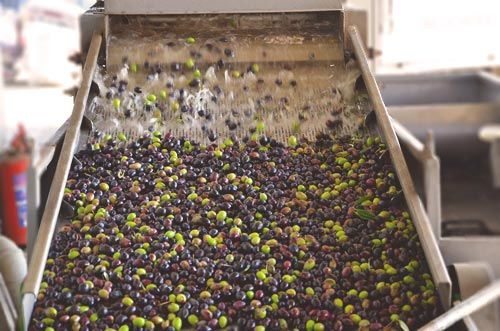
1. The first step of the olive oil production process is to clean the olives from any dirt or pesticides. And also, to remove any remaining leaves, stems, and twigs. This is achieved by washing the olives with lots of running water and then passing them through a large sieve.
2. The next step is to grind the olives into a thick paste. This is done either with stone mills (the traditional method), metal tooth grinders (the modern method), or various kinds of hammer mills.
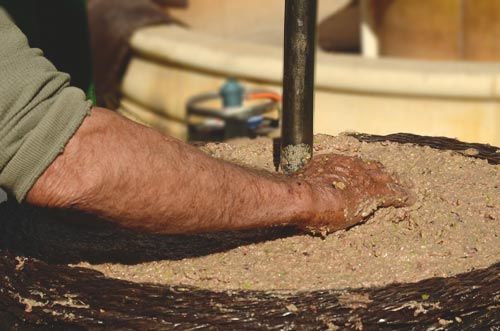
3. After grinding the olives into a paste, this paste gets mixed for a while (usually for 20 to 45 minutes). This is done so the olive paste will start to release small droplets of oil.
4. And in the last step of the olive oil production process, the oil gets finally separated from the remaining components. This is done by presses (traditionally). Imagine big metal disks that spread the olive paste on top of them (like butter on toast) and then they add each one on top of the other (like a huge sandwich). In the end, they get squeezed with a big weight on top, so each layer starts to release small drops of oil. The oil that gets released is the 'extra virgin' olive oil and is ready for use.
In olive oils that are not 'Extra Virgin' or 'Virgin' step 3 is when they heat the oil and take them through a chemical process and add solvents. Those are the so-called refined olive oils. REAL, PURE olive oil is not heated and has no other additives.
4. THE TYPES OF OLIVE OIL
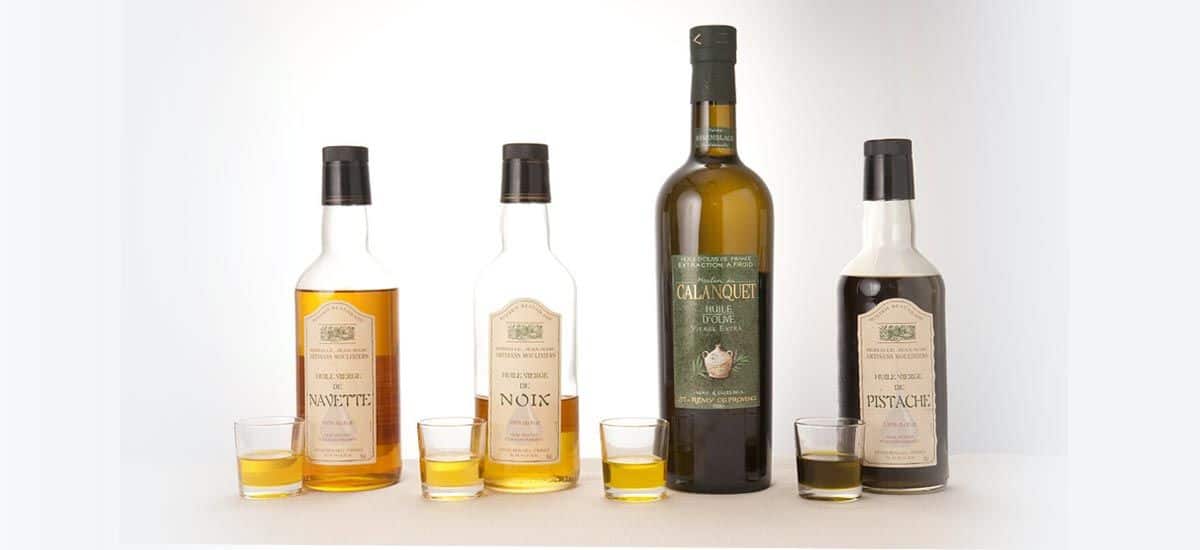
Have you ever walked through the shelves of a supermarket looking to buy some Olive Oil? Have you noticed the different labels of ‘Refined Olive Oil’ and ‘Extra Virgin Olive Oil?’ Do you know that in fact there aren’t many types of olive oil? Yes! There is only one olive oil. And that’s the Real and Pure Olive Oil that’s made as mentioned in the text above.
The 'Refined' Olive Oils
The 'Refined Olive Oils' label is a polite way of telling you -Hey we mixed some olive oil with some other cheap oil and sell it to you at a nice price. Enjoy! That is if you are lucky and it does contain some Olive Oil in it after all. And also if it doesn't contain a very dangerous for your health chemical. So what are these 'Refined Olive Oils' and how are they made?
Refining is to purify. But when it comes to Olive Oil the results are exactly the opposite.
If we translate the word Refining it means Purifying. This has nothing to do though with the process that 'Refined Olive Oils 'go through. Adding chemicals and solvents to the oil, and producing it through heat. Destroying this way its body, texture, flavor, and nutritional value. This cannot be called Refining. It is in fact DESTROYING. And although not clear to the consumers, what Refining is, they are lawfully allowed to do this, if their product is sold under the label of 'Refined Olive Oil'. The reason this is done? Lower production costs and longer shelf life. Therefore more profit for them. That is not the case though with 'Extra Virgin' or 'Virgin Olive Oils'.
The 'Extra Virgin' Olive Oil
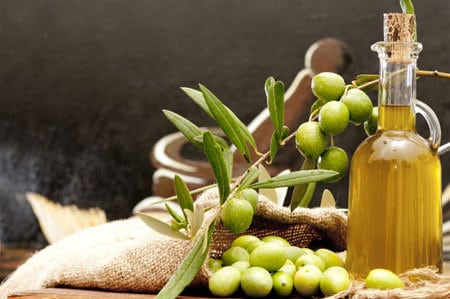
The oils that go under the label of 'Extra Virgin' or else 'Virgin' Olive Oils are the ones that should by law, follow the original procedure for producing Olive Oil. That is, without heating and adding anything AT ALL into the oil. These oils are 'supposed to' be pure Olive Oil made out of fresh olives with all of its natural characteristics and nutritional value. And I say 'supposed to' because even under the label of 'Extra Virgin' Olive Oil there are big frauds going on...
The Fake Olive Oils
There are a few Big Olive Oil companies that sell fake Olive Oil under the label of 'Extra Virgin'. The good thing, in this case, is that since they are not lawfully allowed to do this, they will get stopped eventually. The bad thing though, is that this will probably happen after you have already bought a bottle from them. Here is a list of The 14 Fake Olive Oil Companies to avoid.
So which is the best Olive Oil to buy? The best olive oil to buy is the real one. It will be harder to find but once you find that one brand that sells the real thing, then stick to it. And of course, be prepared to spend some extra pennies on it as it will not be as cheap as fake Olive Oil. The brands that I personally know and trust for their good quality and authenticity of Olive Oil, are these Greek ones. The following links are affiliate links.
- 2017 GOLD Medal Winner PJ KABOS-Greek Extra Virgin Olive Oil
- Terra Creta Single Origin | 100% Pure Greek Extra Virgin Olive Oil
- 2016/17 FRESH Harvest PJ KABOS Greek Virgin Olive Oil-Great value for everyday cooking
- Extra Virgin Olive Oil Kolymvari Born In Crete Greece-First Cold Press
Keep in mind that once you get accustomed to the taste of the real thing, then you'll be able to tell which olive oil is fake and which isn't just by tasting it.
5. HOW TO CHECK IF YOUR OLIVE OIL IS FAKE
- Taste. Real Olive Oil, always has a bitter taste. It is made from olives a fruit that tastes bitter itself. The level of bitterness depends on how ripe the olives were when the oil was produced, and on how fresh is the olive oil. I've tasted an olive oil once that it was so bitter it made my throat burn. It was one of the best olive oils that my family ever produced. So, if there is not even a hint of bitterness when tasting the oil, then you should probably become a bit suspicious.
- Texture. One of my favorite things about olive oil is its thick and velvety texture. It is not runny like water and canola oil. Fresh proper olive oil has the ability to thicken a sauce. In Greece, it is used in stews in order to give them a velvety-like texture. Therefore in order to tell if you're cooking with Real Olive Oil, check to see if it changes the texture of your soup or stew. If the consistency of your food remains the same, then something is wrong. Another good way to check this is to use it in making a salad dressing. If you whisk the olive oil it starts to thicken. Mix your olive oil with ⅓ of freshly squeezed lemon juice (to make 'Greek Ladolemono') and see if it comes out thicker. If you're still not sure, then you can do the same with Canola oil or Sunflower oil and hopefully, you'll see the difference (if it's real olive oil after all).
- Refrigerate. Real olive oil that gets cooled in the fridge, comes out looking cloudy and thick. While other oils remain the same. Add some olive oil to a glass and refrigerate for 2-3 hours. The cloudier it looks when it comes out the better quality it is.
6. OLIVE OIL HEALTH BENEFITS
The advantages Olive Oil has to our health, are numerous and very important. Since it can protect us and prevent various serious illnesses or even help in fighting them sometimes. Hippocrates the father of Medicine has 60 different pharmaceutical uses for Olive Oil in his code of Medicine. Some of them involved healing skin conditions, helping with infections, or even with women's abortions.
-Research showed that a daily intake of 25 ml of Extra Virgin Olive Oil keeps in check cholesterol levels and protects from heart disease.

Even today, Olive Oil is believed to have many health benefits. The first, most important, and undeniable fact about Olive Oil is that it is one of the best fighters against Cholesterol. It is 100% proven that in Mediterranean countries where Olive Oil is consumed DAILY, the number of heart diseases is very low. Especially in comparison to other countries that do not use Olive Oil in their daily cooking. Other than this, not all of the advantages are supported by scientific research.
Here are 10 of the most important and PROVEN health benefits of Olive Oil:
- Strong anti-inflammatory properties
- Reduce the risk of Type 2 diabetes.
- May help prevent strokes. Supports overall brain health.
- Anti-bacterial properties.
- Can help in the treatment of rheumatoid arthritis.
- Protective against heart disease.
- Helps with weight loss and obesity.
- Has anti-cancer properties.
- May help fight Alzheimer's disease.
- Fights mood disorders and depression.
Olive Oil Nutrition Facts
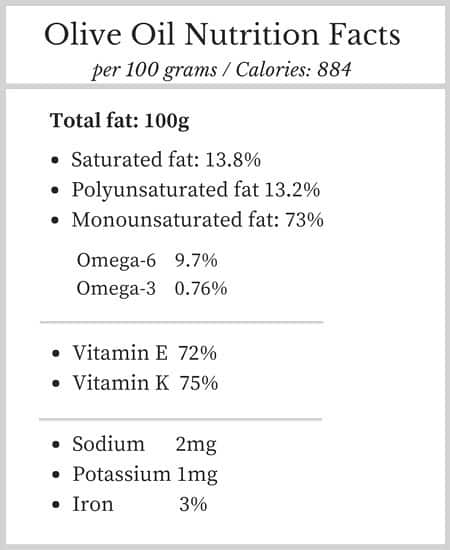
Extra Virgin Olive Oil, is considered the healthiest and most nutritious fat to use for cooking. Some of the reasons are that it is rich in healthy fats such as Omega-6 and Omega-3. It also contains nature's most powerful antioxidants, Oleocanthal, Oleuropein, and its derivative Hydroxytyrosol. And also has a high smoke point at 450°F / 232°C which makes it ideal for frying.
7. COOKING WITH OLIVE OIL
Like any other fat, Olive Oil has a number of uses in cooking. It can be used for frying, stewing, salad dressings, or even in making desserts like these traditional honey cookies.
The best and most nutritious way to consume Olive Oil is off course in its raw form. The more it gets heated the more its nutritional value drops. Did you know though that even cooked Olive Oil is still considered healthier than other fats?
Yeap. As we mentioned in the text above, it has a high smoke point which means that contrary to other oils, it takes a higher temperature for Olive Oil to get burned. In other words, it's pretty resistant to heat.
So when it comes to cooking with Olive Oil, simply substitute it with any other cooking fat. Don't hesitate to use it for frying your porkchop for example. Adding Olive Oil to your diet can only be an advantage, no matter how you do it. But If you are looking for the most nutritious way to consume Olive Oil here are some very healthy Greek recipes that are made using raw Olive Oil.
- The Real Greek Tzatziki Recipe
- Classic Greek Salad Recipe
- Greek Potato Salad Recipe With Garlic, Lemon, And Fresh Herbs
- Greek Garlic And Potato Dip With Olive Oil
- Traditional Greek Smoked Aubergine Dip
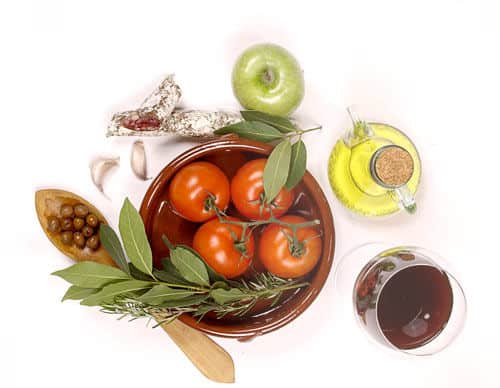
Two other ways in which we consume raw Olive Oil in Greece are 'Ladolemono', and drizzling our bread. 'Ladolemono' is the dressing that we add on top of our grilled meat and fish. Combine ⅓ of lemon with ⅔ of Extra Virgin Olive oil and whisk until it thickens. Then sprinkle on top of your grilled meat, fish, or even your grilled veggies.
To drizzle on top of your bread, grill a few slices of artisan bread and sprinkle with some kosher salt and oregano. Then drizzle some Extra Virgin Olive Oil on top. Serve along with your salad or grilled meat or fish.
Mediterranean countries have a higher daily intake of Olive Oil. Greeks come first with almost 70 ml per person daily. The Spaniards and Italians follow with a daily intake of 35 ml per person.
So What Is Olive Oil?
To sum everything up, Olive Oil (and I refer to Extra Virgin Olive Oil) is the healthiest fat to consume and to use in our daily cooking. It has the biggest nutritional value and numerous health benefits. For these same reasons, it has been consumed and has been well-favored for thousands of years. Its production remains more or less the same as it was years ago, in order to produce a pure and natural product. Buying Quality Olive Oil may require a bit of searching and come with a price but if you consider what it actually gives back, it definitely worth it.

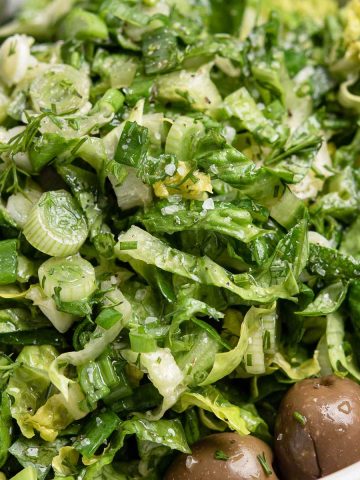

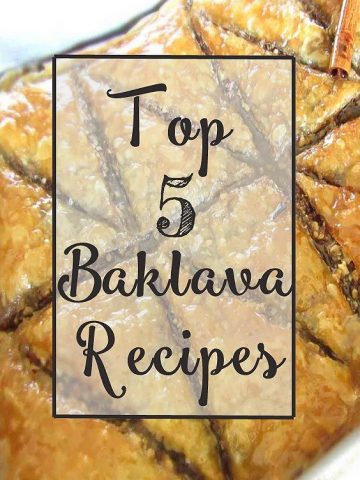
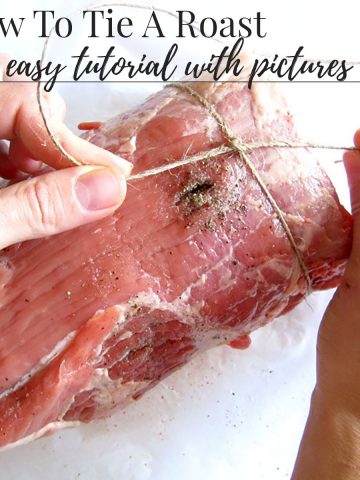
Leave a Reply